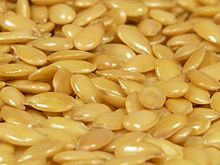Plant propagation
Plant propagation is a horticultural term that describes the various methods by which plants can be reproduced. A distinction is made between generative and vegetative reproduction .
Generative reproduction takes place through seeds . Genetic variation is possible and sometimes even desirable. Seed propagation is inexpensive and can be done in large numbers. It is relatively difficult to transmit plant diseases or pests and, with a few exceptions, the seeds can be stored for several years without a great loss of germination potential. The big disadvantage of generative propagation is that, in order to introduce a new variety, it has to be preceded by a long, very expensive breeding process.
In vegetative propagation, parts of a mother plant are rooted; the newly created plant has the same genetic information as the mother plant. Propagation via cuttings and the so-called tissue laboratory are of commercial importance. Disadvantages of vegetative propagation are the high costs of obtaining a single new plant, the risk of spreading plant diseases and lower capacities than with generative propagation. The big advantages are the high uniformity of the end product and the much shorter breeding process until a new variety can be brought onto the market. Vegetative propagation is therefore only used for high-quality varieties that have to be produced in smaller numbers, e.g. B. ornamental plants used.
